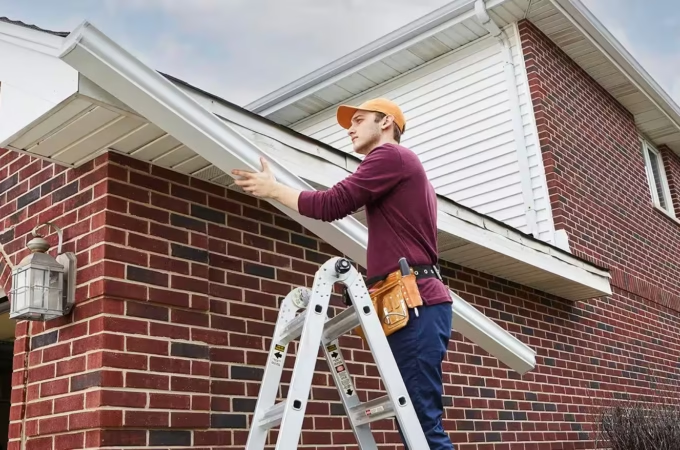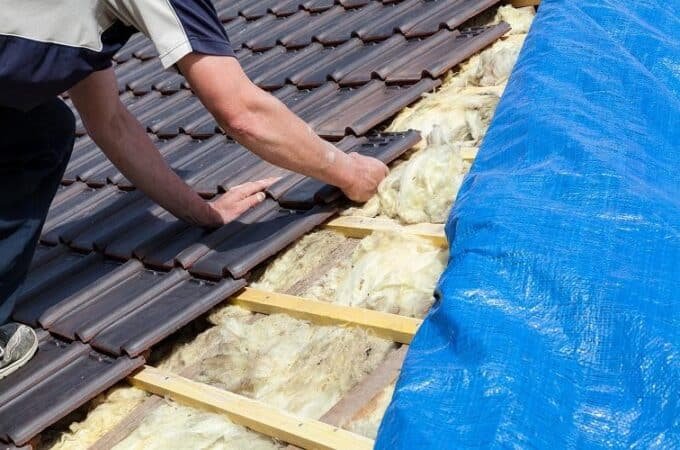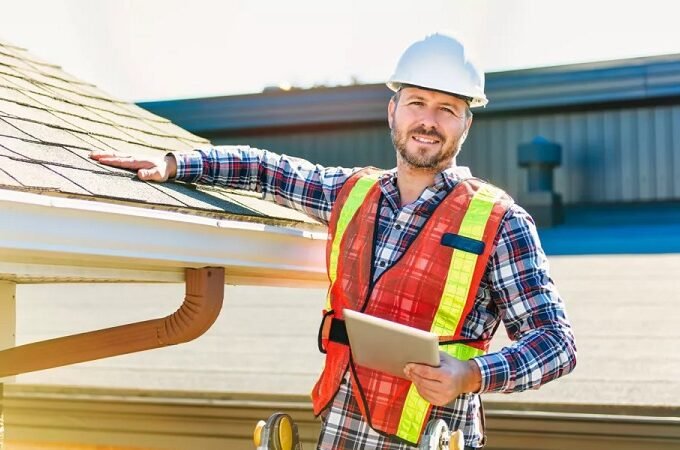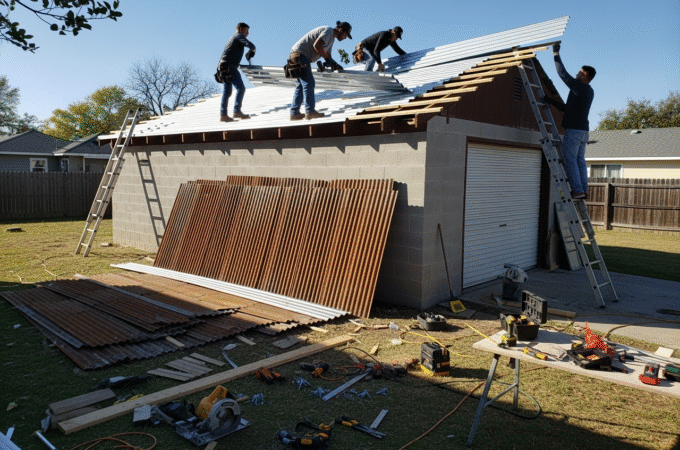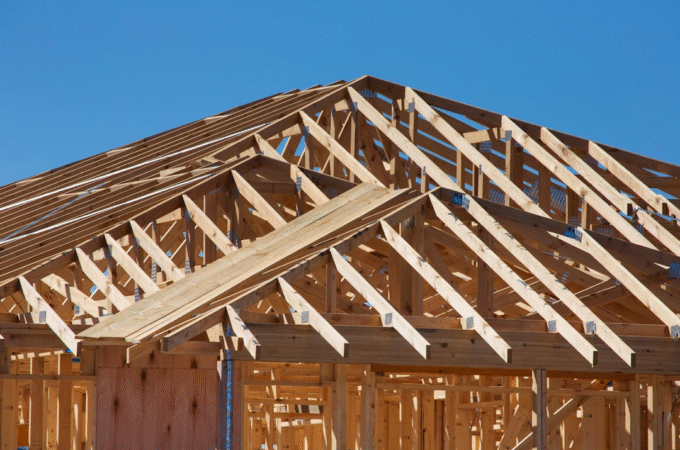
How Today’s Roofing Materials Are Raising the Bar for Homeowners
Key Takeaways:
- Modern roofing materials offer a unique mix of durability, energy efficiency, and design flexibility to serve a wide range of homeowner needs and preferences.
- Eco-conscious roofing options and technological advancements are transforming installation techniques and long-term maintenance strategies.
- Consistent inspections, high-quality installation, and selecting materials tailored to your local climate can significantly reduce costly repairs.
- Awareness of industry shifts and incorporating the latest trends can set homeowners up for smarter roofing investments with better long-term outcomes.
Table of Contents
ToggleRoofing Materials at a Glance
With more home construction advancements than ever, the array of roofing materials available to homeowners today extends far beyond the standard asphalt shingle. One of the most significant developments has been the expansion of choices, allowing individuals to customize their homes according to climate needs, architectural style, budget, and personal taste. Homeowners can now select from classic asphalt, standing seam metal, durable clay tile, eco-friendly green roofs, and synthetic options that replicate the look of slate or cedar, each with varying lifespans and performance capabilities.
However, their lifespan is generally shorter than metal or tile’s, and they may require more frequent repairs in regions prone to extreme weather. On the other hand, metal roofing is celebrated for its exceptional durability (often exceeding 50 years), resistance to wind and pests, and ability to shed snow efficiently in winter climates. Clay and concrete tiles offer unmatched longevity and thermal resilience, while engineered products can deliver the traditional aesthetics of wood or slate without downsides. For homeowners feeling overwhelmed with these variables, consulting with Springfield roofing experts can clarify the ideal material for the property’s specific needs.
Regional weather patterns and energy efficiency goals also influence selection. The wrong installation or an unsuitable choice can result in significant energy loss year-round, leading to higher utility bills and indoor comfort issues. The Department of Energy recommends a holistic approach that evaluates insulation, color, heat reflectivity, and the local climate, as extreme heat or cold may affect material performance. By considering all these factors, homeowners are better equipped to choose a roof that protects their home and contributes to its long-term value.
Sustainability and Eco-Friendly Choices
The increasing emphasis on sustainability in the modern housing market has put eco-friendly roofing front and center. Today, more homeowners prioritize green practices to reduce their carbon footprint and take advantage of significant energy savings and potential rebates. Roofing manufacturers have responded with innovative products such as recycled composite shingles, cool roofing membranes, and living green roofs covered in vegetation. These options do more than enhance curb appeal—they can reflect solar energy, reduce indoor temperature fluctuations, and contribute to cleaner, healthier urban environments.
For example, cool roofs help lessen the urban heat island effect, where concentrated development leads to higher city temperatures. These systems typically use reflective coatings or light-colored materials to bounce heat back into the atmosphere, keeping the home cooler and reducing air conditioning costs. Many materials, including metal and certain types of membrane roofing, are manufactured to be fully recyclable after their service life. Not only does this help divert waste from landfills, but it also supports a circular economy where resources are reused rather than discarded.
According to Architectural Digest, sustainable roofing is rapidly gaining momentum, with key advances including solar-integrated products and planted green roofs that support pollinators and improve insulation. On top of this, government incentives for installing reflective or energy-generating roofs offer additional financial motivation. As more homeowners become aware of both the environmental and economic benefits, sustainable roofing is shifting from trend to standard practice, helping to create a greener and more resilient built environment.
Emerging Roofing Technologies
The pace of innovation in the roofing industry is accelerating, bringing a host of technological advancements that are redefining what’s possible for the average home. Integrating smart home technology into roofing systems is one of the most exciting areas. Homeowners can now install sensors and monitors that provide real-time feedback on roof performance, detecting leaks, identifying temperature changes, or warning of accumulating snow or ice on the surface. Early detection of such issues means repairs can be made before extensive damage occurs, reducing costs and inconvenience while protecting the structure below.
Another revolutionary advancement comes from the materials themselves. Scientists and manufacturers have developed polymer-based membranes and coatings that offer self-healing properties. When minor cuts or punctures happen—whether from debris, hail, or general wear and tear—these materials respond to moisture by activating chemical processes that seal small gaps automatically. Over time, this reduces the need for continual patching and extends the roof’s life, all while minimizing maintenance hassles for the homeowner.
Energy-generating technologies are also quickly becoming mainstream. Instead of mounting bulky solar panels onto the surface, new roofing products embed photovoltaic cells directly into shingles and tiles, blurring the lines between energy generation and waterproofing.
Boosting Energy Efficiency With the Right Roof
Energy efficiency is not simply a matter of environmental concern—it’s also a practical approach to reducing monthly household costs and maximizing comfort through every season. The roof’s position as the home’s first line of defense against heat gain and loss makes it a crucial part of the larger building envelope. Recent studies have shown that up to 25% of a home’s internal energy can escape through the roof if not properly designed and insulated.
Selecting materials like highly reflective metal roofing, tile with specialized coatings, or membrane roofs designed for flat surfaces, homeowners can minimize the heat absorbed during summer and held in during winter. But roofing doesn’t work in isolation: attic insulation and ventilation play pivotal roles in stabilizing interior temperatures. By ensuring your roof system works in concert with insulation in eaves, attics, and upper walls, it’s possible to maintain ideal temperatures across all seasons and dramatically reduce energy waste.
Additional benefits of energy-efficient materials include reducing peak energy demand on hot summer days, extending the life of heating and cooling equipment, and even lowering urban air temperatures on a community-wide scale. The Department of Energy encourages homeowners to seek out roofs certified for their solar reflectance and thermal emittance properties. When paired with skilled installation and airtight construction, these features translate to tangible savings, less dependence on fossil fuels, and sustained comfort, even during intense weather.
Design Innovation: Beauty Meets Durability
Just as important as durability and performance is a roof’s role in shaping a home’s character and architectural identity. Manufacturers recognize that homeowners want choices that express personal style as well as safeguard property. This has sparked an explosion of design-forward products that blend cutting-edge aesthetics with long-term protection, meaning no one needs to sacrifice beauty for strength.
Today’s roofing products offer an expansive palette of colors, patterns, and finishes, ranging from the deep, layered dimension of architectural shingles to the metallic sheens of copper and zinc. Synthetic materials have advanced to the point where they replicate the texture and appearance of traditional slate or wood shakes without their drawbacks, such as excessive weight or susceptibility to rot. Lightweight composite materials are especially popular for retrofit applications, enabling the installation of visually stunning roofs even on structures that can’t support heavier alternatives.
Durability goes hand in hand with design, as innovations bring algae resistance, enhanced UV protection, and improved fire ratings to the forefront of product offerings. These improvements allow the chosen style to last for decades with little fading or damage, even in regions with harsh sun or strong storms. Many manufacturers back their most innovative products with 30—to 50-year warranties, giving homeowners confidence that their investment will stand the test of time, both in beauty and resilience.
Maintenance Tips for a Longer-Lasting Roof
No matter how advanced or robust a roofing system may be, maintenance is the cornerstone of longevity. The best way to safeguard your investment is by developing a regular care routine, ideally combining homeowner vigilance and periodic professional attention. Inspections should occur twice a year—ideally during spring and fall—after the harsh weather of winter and summer has subsided. This involves examining the surface for cracked, curled, or missing shingles, loose flashing around roof penetrations, and any signs of moisture infiltration along the eaves or attic interior.
Gutter and downspout maintenance is equally vital. These channels move water away from the foundation, preventing standing water and potential leaks. Blocked gutters threaten the roof and can lead to ice dams, which may force water beneath roofing materials and into the home itself. Make it a habit to clear gutters of leaves, twigs, and debris at least twice yearly, and after significant storms if possible. Trimming back overhanging branches reduces the risk of abrasions and the accumulation of organic waste while minimizing the likelihood of animal intrusions.
Attending quickly to minor repairs is another vital aspect of roof care. Small leaks, a broken shingle here or there, or isolated patches of lost granules may seem insignificant. Still, they can allow water to enter and cause extensive damage over time. For jobs beyond basic repairs, periodic evaluations by professionals are invaluable—roofers are trained to spot early signs of wear or structural compromise that untrained eyes can miss. Regular maintenance protects your roof and helps maintain home insurance eligibility and property values in the long run.
Industry Insights and Latest Research
The roofing industry today is at the intersection of rapid technological progression, evolving building standards, and environmental awareness. As severe weather events become more frequent, resilient construction is increasingly vital. Manufacturers have responded by creating roofing systems that exceed traditional wind- and impact-resistance criteria, helping to protect homes from hurricanes, hailstorms, and wildfires. Many regions now require roofing products to meet mandatory code enhancements, which are updated in response to local risks and national research findings.
Keeping up with current, evidence-based information equips homeowners for better decision-making. Reliable industry data published by the Department of Energy clarifies energy performance and lifespan expectations for different products. Meanwhile, forward-thinking publications like Architectural Digest highlight breakthroughs in sustainability and design. Following industry trends, such as the increasing use of impact-resistant asphalt shingles or integrated solar solutions, ensures that your roofing choice will remain relevant for many years.
Another key industry trend is the movement towards eco-certification and transparency. Products now routinely carry certifications that assure sustainable harvesting, recycled content, or responsible manufacturing practices. This transparency allows consumers to make choices aligned with their values and priorities, further empowering them as stewards of their homes and the environment. Building on the foundation of tested research and robust materials, today’s roofs genuinely set new standards for the entire built environment.
Final Thoughts
Roofing has changed dramatically in recent decades. No longer just a functional cap atop your property, the modern roof enhances curb appeal, reduces environmental impact, improves comfort, and increases the value of your most significant investment. Homeowners with the latest knowledge—from sustainability and innovative technology to material resilience and design innovation—are better equipped to make decisions that protect their families and finances.
The roof you choose today can reliably serve you for a generation or more, provided you prioritize careful material selection, skilled installation, and vigilant maintenance. Engage with experts, stay current with research and regulations, and don’t hesitate to explore cutting-edge products that offer new possibilities for energy production and environmental harmony. As roofing materials evolve, the promise of safer, more beautiful, and more efficient homes grows brighter for everyone.

